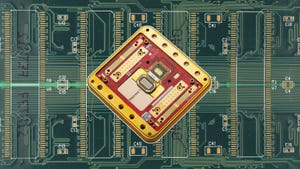
Insight and analysis on the data center space from industry thought leaders.
Disaster Avoidance: How Visibility Could Save The DayDisaster Avoidance: How Visibility Could Save The Day
It’s much better to be prepared in advance than to have to deal with recovering from a disaster.
October 31, 2018

Tom Bishop is Vice President, Data Center Services, for RF Code.
Unplanned downtime in a data center is a disaster. In 2016, the average cost for unplanned downtime was $8,850 per minute. With an average downtime of 95 minutes, there is potential for a significant impact on the business and the bottom line. To prevent this kind of downtime, businesses need to protect themselves as much as possible from threats to data center operations.
Disasters come in all shapes and sizes. There are major, and thankfully rare, threats like earthquakes, hurricanes, tornadoes, or terrorism or civil unrest. Realistically, though, the next unplanned downtime event at your data center is likely to be caused by a more mundane threat, such as fire, water leaks, changes in temperature or humidity, equipment failure, power loss, or even operational risks like human error or maliciousness (damaging equipment or walking an asset out the door). As the price tag on unplanned downtime, which includes cost associated with repairs and new equipment, lost productivity, and lost business, demonstrates the effect of these risks is anything but ordinary if they’re not addressed immediately.
Data centers are complex and growing in importance every day in our data dependent and real-time world. A key element in protecting data centers is monitoring and real-time visibility. You may not be able to prevent a pipe from leaking or a short from starting a fire, but you can prevent those events from wreaking widespread havoc. The sooner a problem is identified, the sooner it can be repaired or mitigated; or you can switch to backup servers to protect operations while dealing with the issue.
Real-time Monitoring
Manual processes for auditing data center assets and checking environmental conditions are time consuming and labor intensive at the best of times. These processes are useless for keeping track of what’s happening in the data center on a daily basis of for identifying potential or actual threats. When it comes to disaster prevention and mitigation: You can’t fix a problem you can’t see and you can’t see what you don’t monitor.
With sensors deployed throughout, both on individual assets and to monitor environmental conditions, and the right real-time monitoring system to manage and analyze the data coming in, you will be able to respond to anything in your data center when it happens. You will identify potential threats, such as sub-threshold changes in humidity or temperature that may indicate a larger problem on the horizon, and then make necessary adjustments or repairs. You will also be able to respond immediately to actual threats, like a power outage or power surge, before they cause significant and costly downtime.
Real-time monitoring is part of a complete disaster recovery and business continuity plan for your company. In addition to notifying the team when there is a known threat to the system, with the ability to track and recognize standard operations and trends, you can identify potential issues when they first occur. This means someone on your team can be notified anytime day or night when something goes wrong. And you can respond immediately, rather than not notice a steady increase in humidity that eventually damages equipment and rather than arriving at work one morning to find the fire department on scene to deal with the spark that ended up starting a fire.
Beyond avoiding disaster, real-time monitoring has many other key operational benefits. It enables data center managers to increase operational efficiency, maximize use of existing resources, and create a more comfortable environment for the equipment and the humans who work in the center.
Given the size and complexity of data centers, it’s just not possible to eliminate all the risks. But as anyone who has ever dealt with a disaster will tell you, it’s much better to have been prepared in advance than to have to deal with recovering from a disaster, especially one it is straightforward to have planned for. Real-time monitoring gives you peace of mind: When something happens to threaten your data center, and it will, you’ll be able to deal with it immediately, giving you the best chance to reduce or mitigate any unplanned downtime and the high costs to the business that are associated with it.
Opinions expressed in the article above do not necessarily reflect the opinions of Data Center Knowledge and Informa.
Industry Perspectives is a content channel at Data Center Knowledge highlighting thought leadership in the data center arena. See our guidelines and submission process for information on participating.
About the Author
You May Also Like









